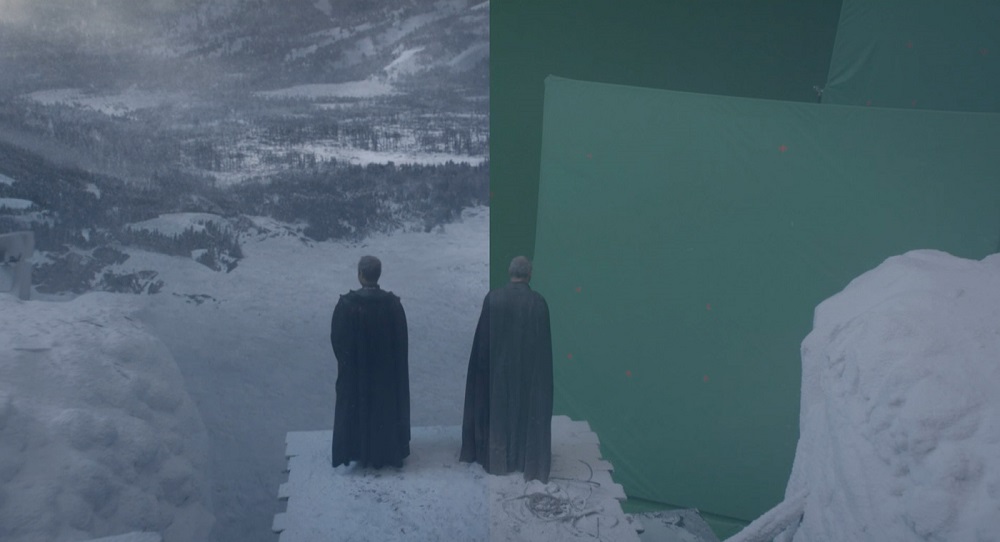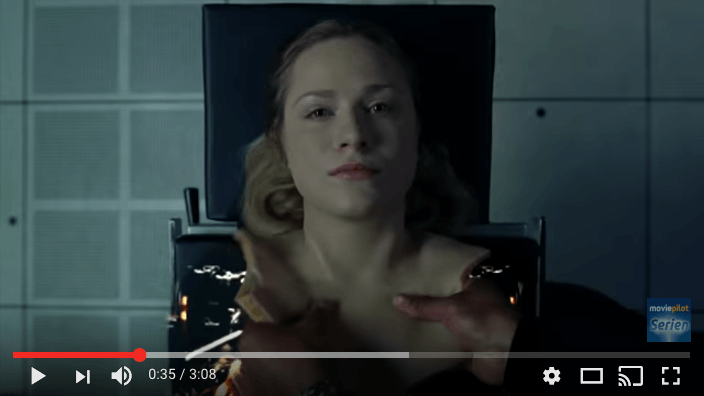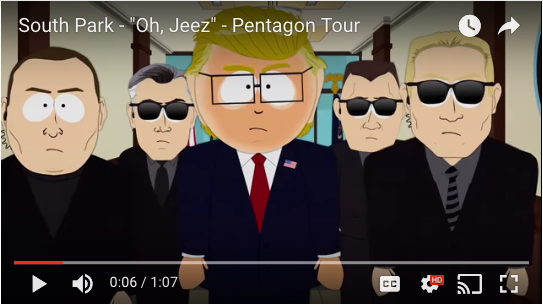
Animations, computer generated imagery (CGI), visual effects and special effects have the power to stretch the limits of the human imagination, boldly creating that which is beyond the barriers of our physical reality. Fundamentally, these tools allow storytellers to fake some of the most touching and also the most gruesome scenes we’ve ever seen (#cannotunsee!). What makes these sometimes eyebleach-worthy scenes digestible is the fact that they are not real, no matter how lifelike they appear. Consider Oberon having his eyes gouged out in Game of Thrones or even the million ways to die as a host in WestWorld! What would your favourite TV shows be like without these technological advancements in visual entertainment?
Let’s take a look at what some of the most popular shows on television have in common – the animation and special effects we can’t live without!
[WARNING SPOILERS AHEAD!]
Photos: YouTubeGame of Thrones
Considered the most popular show on television for last 6 years and now into its 7th season, Games of Thrones has wowed international audiences with unmatched storytelling and unbeatable special effects. The Association for Computer Graphics, ACM SIGGRAPH, perfectly compares the production process of Game of Thrones to alchemy, saying “It’s a special type of alchemy so powerful, it can transform 1s and 0s into fire-breathing dragons, sea-battered castles and legions of shuffling undead.”
Now affectionately referred to as GoT by fans worldwide, the show has captivated its audience, indeed largely due to the magic behind the show’s special effects. Pixomodo is the proud pre and post production talent behind GoT.
In an interview originally published with It’s Art Magazine, the VFX Supervisor of Pixomondo talks about the production pipeline for the Game of Thrones series. He says that all of the sets are done using 3ds Max and that the creature work is done using Maya.
If the 8.9 million viewers during last season’s finale wasn’t enough proof, the shows visual talent is paying off winning an Emmy Award in 2015 for outstanding special visual effects. Pixmodo, you deserved it!
South Park
South Park is one of the world’s most popular and at times most controversial cartoons. The South Park producers are praised for their insanely short production time, staying up late to deliver accurate rhetoric about politically sensitive or sometimes just jaw-dropping societal antics (Human Centipede episode anyone?!).
Take the American election for example. The producers of South Park, Trey Parker and Matt Stone, hadn’t seen Trump winning (like many) and rewrote the entire episode between Tuesday and Thursday. To anyone who works in TV production or animation, they know that this turnaround time is insane! So what is the key to South Park’s timely and topical TV success? The answer is in the animation and the animators.
While the very first 1997 episode featuring Cartman getting anally probed was hand drawn over three months, those original sketches were scanned and added to a database that is still powering the show’s visual imagery, according to South Park Studios blog.
Animated in 2D by a team of 10, South Park episodes are planned using Storyboard software and brought to life using 3DS Maya. The talent behind the storyboarding software, Toon Boom, recently discussed their thoughts about South Park’s production pipeline on Reddit, they say:
“While we are not South Park animators, we do have a little insight into the process! South Park uses Storyboard Pro to plan their episodes. The key to quickly completing episodes is to keep your animation and design simple, and to reuse when possible. The more you animate and the more episodes you produce, the larger your bank of characters, models, animations, backgrounds, and props will be … This lets you drop elements into your scenes to use as is or to adjust to match the storyboard. South Park makes sure their show is story driven – a strong story could even be animated with stickmen and would still be a success!”
We couldn’t agree more. The South Park episodes could’ve been told with animated stickmen and still had outrageous success because their storytelling is so damn hilarious and amazing!
Westworld
Westworld gets to the heart of special effects in television in an elegantly mysterious dialogue of what is real and what isn’t. William, a character in the show asks “Are you real?” to one of the robot hosts of Westworld and she replies “If you can’t tell, does it matter?” As the newest contender in the list of fan-favourite, craveworthy television series that just would not be the same without their bend-your-mind-backward special effects, Westworld goes deep.

Capturing this kind of artificial reality and making viewers believe these gruesome death scenes is the artwork of the talented makeup team in combination with the special effects team. Together the two raise Westworld’s reality-factor to a new level. Christien Tinsley is the head of the makeup department, and he says that 99% of the set is real, containing machines, mechanisms and real moving parts. However, he clarifies that while there are moving parts in the context of a real set, that it is the actual biological material coming out of those machines and attaching itself onto a skeleton (“muscle sewing”) for example that is a common special effect in the show as hosts die and are rebuilt over and over.
The VSF Supervisor of the series, Jay Worth, explained that a ton of work and editing goes into the post production process in an interview with Inverse. Worth says that a lot of the special effects are “compositing,” using a program called Nuke. Meanwhile, the Art of VFX reports that the show’s special effects are brought together by a combination of VFX studios including Double Negative, Shade VFX and CoSA VFX.
Cosmos: A Spacetime Odyssey
Also on the list of Nuke clients is Cosmos created by Tippett studios, alongside executive producer Seth MacFarlane. Tippett is a CG studio known for blockbuster special-effects-based-films like Jurassic Park, The Jungle Book and so many more. But Cosmos is a favorite in the TV world and definitely on the list of most favourite TV shows made possible by outstanding special effects and animation thanks to Tippett.
The series is inspired by and based on the 1980 series Cosmos: A Personal Voyage that aired on PBS and was supported by computer graphics of the time. One of the first of its kind, the original Cosmos series facilitated the learning of dense scientific concepts using CG special effects and simplified explanations of theory. The remake falls very closely beside the original Cosmos series, using the same 13 episode format and updating the original content with modern scientific theory and enhanced CGI and special effects.
The CG Supervisor at Tippett, Ben Von Zastrow, says that they use the Nuke and Modo software programs for the show, allowing them to position lights in the scene while they’re setting up textures and ultimately making the visual aspect of the show possible. Another CG Supervisor at Tippett, Brad Fox says software tools like Katana allow for render passes and lighting while ramping up flexibility in the pipeline, an aspect important to deliver on short turnaround times. The software tools behind Cosmos are all created by a UK company called The Foundry.
The breakout series that aired just before Halloween this year, otherwise known as Stranger Things, captured the heart of a nostalgic audience worldwide. The plot unfolds masterfully with an unbeatable cast and special effects so real that you may keep the lights on after episodes end!
Set in the 1980’s, the show walks viewers through the unexplained disappearance of a young boy in a small town, as a young girl with supernatural powers appears to reveal where the boy is being held. If you haven’t seen the series, this all may sound a bit strange (pun intended), but with the CGI, visual, practical, special and even animatronic effects, you won’t question the storytelling. In fact, you likely won’t blink because you won’t want to miss a second of this series.
Spectral Motion was brought in to build the demogorgan animatronic monster suit in less than 2 months. The monster suit weighed 30 pounds and was powered by 26 motors inside the head and arms that were being remote-controlled during filming. The actor’s face was actually visible in real life in the mouth of the monster but was digitally replaced by ASC to give the visual effect of the inside of the monster’s mouth.
While according to Tech Crunch the original artwork for the series was done using an app called ProCreate, The Art of VFX reports that Gradient Effects, CoSA VFX and Aaron Sims Creative (ASC) all worked behind the scenes on the visual effects of the show. The Stranger Things wikia breaks down the production of Season 1 reporting that about 50% of the show was practical effects and the other 50% was visual effects also using the Nuke program.
To Wrap it Up
As we head towards Oscar season and Emmy season, we will remember the Leos, the Kates and all the other famous faces that interpret the roles of the characters in our favourite productions, but lest we forget the talented teams that work round the clock internationally to bring magic and alchemy to the screens and series we can’t live without. To the animators, the VFX supervisors, the 3D modelers and all of the other less celebrated but no less important production staff on our favourite TV shows, we raise our hats and our glasses to you!


